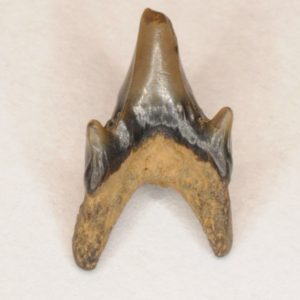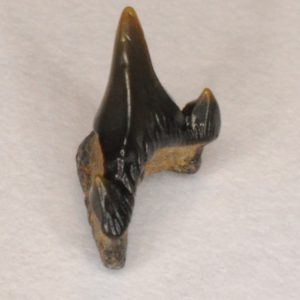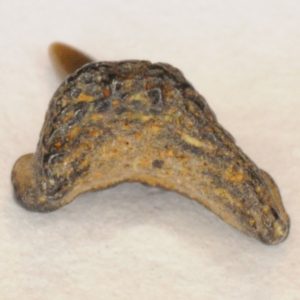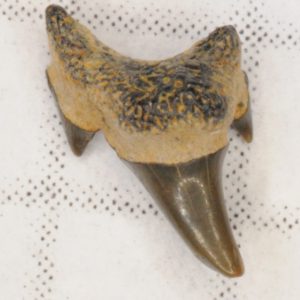NJfossils.com
"Fossils aren't a hobby, they're a lifestyle."Mackerel (Protolamna borodini aka Cretodus borodini aka Plicatolamna borodini)
Age – Late Cretaceous; Commonality – Uncommon; Size – avg: 1/4 inch, max: slightly over 1/2 inch
These teeth are similar to the other mackerel shark teeth. The difference is that these teeth are significantly smaller and have exaggerated features. Their lingual protuberances stick out more than on any other species found in the area. The cusplets are robust. The root is large in comparison to the crown. They also possess strong wrinkles on the labial side and sometimes on the lingual side of the crown when unworn. These teeth are very prone to breakage and usually have in-vivo wear, a broken root, or a worn down lingual protuberance.
Anterior Teeth
This tooth is a lower anterior. Note the symmetrical shape and straight crown.
Lateral Teeth
This tooth is a lower lateral. It has the asymmetrical shape of upper lateral teeth, but is less angled. Most sharks have lower teeth that have more prominent lingual protuberances than uppers.










































